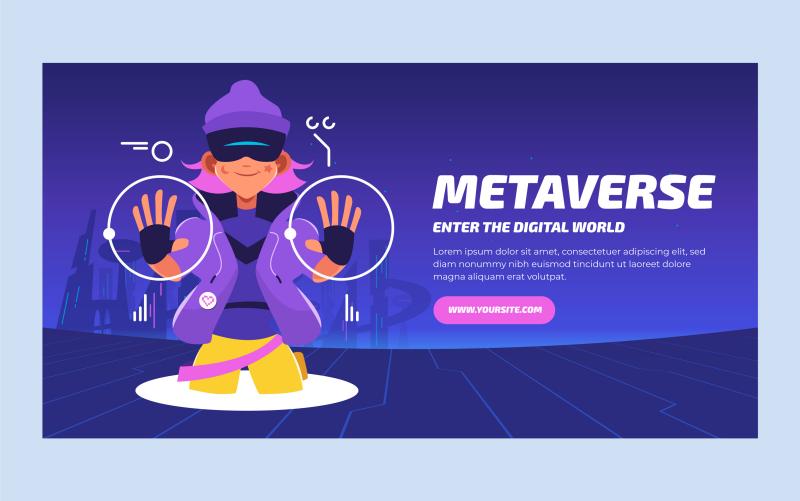
Introduction
In recent years, the concept of the metaverse has evolved from science fiction to a tangible frontier of digital interaction and commerce. Defined as a collective virtual shared space, created by the convergence of virtually enhanced physical reality and physically persistent virtual reality, the metaverse promises new avenues for entertainment, communication, education, and business. As organizations and developers venture into this immersive digital realm, one critical consideration stands paramount: estimating metaverse development cost.
Understanding the Metaverse
Before delving into cost estimation, it’s essential to grasp the scope and components of the metaverse. Unlike traditional applications or websites, the metaverse integrates various elements:
- Virtual Worlds: These are the digital environments where users interact, often resembling real-world spaces or entirely fantastical realms.
- Avatars and Identity Systems: Users navigate the metaverse through avatars, customizable digital personas that represent them within virtual environments.
- Blockchain and Digital Assets: The metaverse leverages blockchain technology for digital asset ownership, enabling trade, creation, and management of virtual goods.
- Social and Economic Infrastructure: Just like the physical world, the metaverse requires systems for social interaction, economic transactions, governance, and security.
Factors Influencing Metaverse Development Costs
Estimating the cost of developing a metaverse environment involves considering several interconnected factors:
1. Platform Selection
Choosing the right platform is crucial, as it dictates development tools, scalability, and audience reach. Popular platforms include:
- Decentraland: Built on blockchain, allowing users to create, monetize, and explore virtual worlds.
- Roblox: Primarily a gaming platform but expanding into a broader metaverse concept, focusing on user-generated content.
- Second Life: A longstanding virtual world where users can create, trade, and interact.
Each platform has its development frameworks, community standards, and monetization models, influencing initial and ongoing costs.
2. Technology Stack
The technological backbone of a metaverse includes:
- Virtual Reality (VR) and Augmented Reality (AR): Essential for immersive user experiences but requiring high-end hardware and software integration.
- Blockchain Integration: Facilitates ownership and trade of digital assets, impacting development complexity and security considerations.
- Cloud Infrastructure: Scalable servers and data storage are necessary for hosting virtual environments and managing user data securely.
Choosing between proprietary solutions and open-source technologies significantly affects upfront costs and long-term maintenance.
3. Content Creation and Design
Metaverse environments thrive on engaging content and intuitive design:
- 3D Modeling and Animation: Creating realistic or stylized virtual worlds and avatars demands skilled artists and animators.
- Sound and Music: Enhancing immersion through spatial audio and dynamic soundscapes.
- User Interface (UI) and User Experience (UX): Intuitive navigation and interaction design are crucial for user retention and satisfaction.
Investing in high-quality content creation drives user engagement but requires budgeting for creative talent and iterative design processes.
4. Regulatory and Legal Considerations
Navigating legal frameworks around virtual currencies, digital asset ownership, and user privacy is essential:
- Compliance: Adhering to international and local regulations governing virtual economies and user data protection.
- Intellectual Property: Protecting original content and trademarks within the metaverse environment.
Legal consultations and ongoing compliance monitoring add to operational costs and risk management strategies.
5. Monetization Strategy
Generating revenue within the metaverse involves diverse models:
- Virtual Real Estate: Selling and renting digital land within virtual worlds.
- Digital Goods and Services: Monetizing custom avatars, virtual items, and experiences.
- Advertising and Sponsorships: Partnering with brands for in-world promotions and events.
Choosing the right monetization mix aligns with platform capabilities and user preferences, impacting revenue streams and profitability.
Estimating Development Costs
Based on the factors discussed, estimating metaverse development costs involves:
- Initial Development Costs: Includes platform licensing, technology infrastructure setup, and content creation.
- Ongoing Maintenance and Updates: Budgeting for server maintenance, security updates, and content expansion.
- Marketing and Community Building: Promoting the metaverse environment to attract and retain users, fostering a vibrant community.
- Legal and Compliance: Allocating resources for legal consultations, regulatory compliance, and risk management.
Conclusion
The metaverse represents a transformative frontier where digital innovation meets immersive experiences. Estimating development costs involves a holistic approach, considering platform selection, technology integration, content creation, regulatory compliance, and monetization strategies. By meticulously planning and budgeting across these domains, developers and organizations can navigate the complexities of metaverse development, turning conceptual ideas into vibrant digital realities.
As the metaverse continues to evolve, so too will the methodologies and considerations for estimating development costs. Stay tuned for ongoing advancements and insights into this dynamic digital landscape.